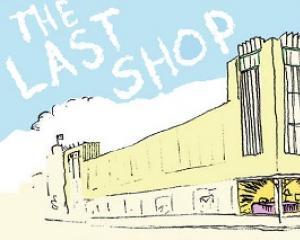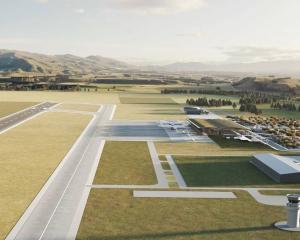High above the passer-by, glass or wire netting-covered openings give a tantalising glimpse into the towers and spires of historic Dunedin. Overcoming vertigo, David Loughrey ventured where most do not get to go. Here, he explores the magic spaces inside the clock towers of the Dunedin Railway Station, Dunedin Town Hall, the University of Otago's registry building, and the spire of Knox Church.
• Otago Towers and Spires series
Outside is the procession of tourists who, year after year, stop to take its picture.
Outside is the outstanding monument to Edwardian architecture in New Zealand, "Gingerbread" George Troup's basalt and Oamaru stone ode to the age of rail, the historic Dunedin Railway Station.
But it is inside, high in the domed tower located at the southwest corner of the building, that the personal history of the building is literally written on its walls.
Scratched into those walls is the graffiti of long lost years, where "Butterfield, junior porter, 1955" chose to leave a reminder of his employment, and "PK" left an echo of his or her love "4 JT".
The well travelled "Johnny" who "was here" appears as well.
The tower looms large above the pedestrians who walk to the central city over the railway bridge from Thomas Burns St to the city.
Not far below the domed, fenced rotunda that sits on top can be seen a sizeable room, with three windows facing out from each of its four sides, which has an alluring appeal for the curious.
To get there, a mission available to the media though the offices of Dunedin City Council property manager John Varney, requires a trip to the first floor of the building, then through the sort of small door at the back of someone's office that would suit as a stand-in for the cupboard door that took the children to Narnia.
The trip to the top begins well enough, with an attractive wooden staircase that winds its way gently upwards next to the wall, taking the climber up towards the station clock, and the clock faces spreading their diffused light into the tower. As well, there are walls of artless graffiti and shelves and cupboards obviously once used by railway staff.
The main room is aged and dusty, but the view is a Dunedin classic, and would be a major selling point if the railway station was ever let as apartments.
An aged, rickety arm chair bears mute testament to the decades of railway workers who have, undoubtedly, found their way to the private but well-lit chamber.
The view from the windows includes a line of sight up Stuart St to the Octagon.
It is from there that things get slightly alarming. The stairs turn into rickety ladders, and manholes get steadily thinner, until access into the tower's larger dome is best left to the svelte.
Finally, after crawling through the cramped dome, one emerges outside, in the rotunda, with the view stretching up and down the rail tracks to the north or south. There is one final manhole, allowing access to the flag pole on top of a smaller dome.
That final journey can wait for another time.
Dunedin Railway Station
• Competition for design won by George Alexander Troup (1863-1941).
• Constructed during period of growth for New Zealand rail system from 1890s to early 1900s.
• Foundation stone laid 1904; building officially opened 1906 but not completed until 1907.
• Tower strengthened in 1965, again in 1969, and major refurbishment in 1995.
• Constructed from Kokanga basalt on base of Port Chalmers basalt, with Oamaru stone dressings.
• Basalt taken from quarry in Central Otago specifically opened for station.
• Built on reclaimed land in position that caused much controversy; About 600 piles had to be driven into the bedrock to support the weight.
• New Zealand Rail sold the building after major restructuring and retrenchment in 1980s and early 1990s.
• Dunedin City Council took possession in 1994.












